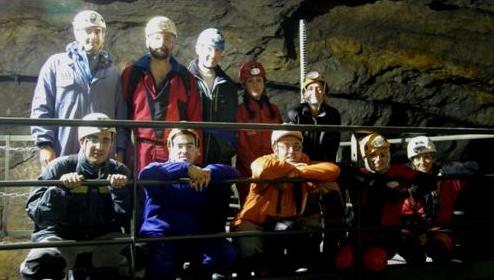GTE
The Group of Technologies in Hostile Environments (GTE) from the University of Zaragoza (Spain) was founded in 1997 and its work is mainly oriented towards natural and/or hostile environments, such as high mountains, polar zones, canyons and underground environments (caves, mines, tunnels). The main objetives of the GTE are the study of these environments and development of technology for research activities, exploration and rescue.

The GTE is formed by a group of professors and researchers (nowadays 14 people) from the University of Zaragoza, belonging to other consolided groups (Robotics, Perception and Real Time Group; Power Electronics and Microelectronics Group, Computer Architecture Group, Applied Supercondutivity Group) and experts from different areas: geology, electronics, communications, computer architectures, system engineering, embedded systems and real time. Most of the GTE PhD doctors belong to the Aragón Engineering Research Institute, I3A.
Where we are
 Besides the instalations in the University of Zaragoza Rio Ebro Campus in Zaragoza, from January 2005, the GTE develops its work in the Advanced Research Laboratories in Walqa Technological Park (Huesca) under the agreement between IAF, Aragón Government and the I3A.
Besides the instalations in the University of Zaragoza Rio Ebro Campus in Zaragoza, from January 2005, the GTE develops its work in the Advanced Research Laboratories in Walqa Technological Park (Huesca) under the agreement between IAF, Aragón Government and the I3A.
The GTE develops in WALQA the line of "Information and Communication Technologies(TICs) in Hostile Environments" shown in this agreement. In this line, it studies the problem of application these technologies in environments where the more developped technologies do not work or present serious problems. Road or railway tunnels, the subsurface mines, canyons or caves, subsurface parkings and, in short, any confined area are some examples of these environments.
Work areas
Nowadays several work areas are dealed with: radiolocation, Through-The-Earth (TTE) communications and communications in robotic intervention and rescue activities . Radiolocation and TTE communications are afected by the same problem: radio waves are not capable of penetrating more than few hundreds of meters in condutive materials as the rock, water or snow. For trespassing this kind of materials the work frequency must be in the LF-VLF range. The developped technology for this frequency range is very scant, causing serious efficiency problems. On the other hand, the available bandwidth is also very small.




